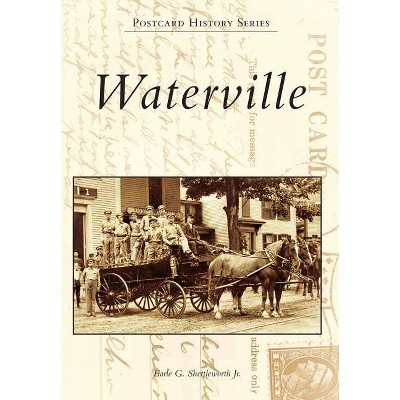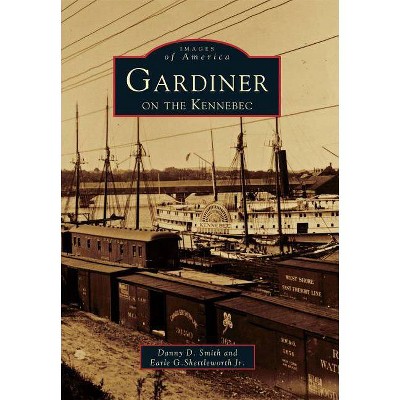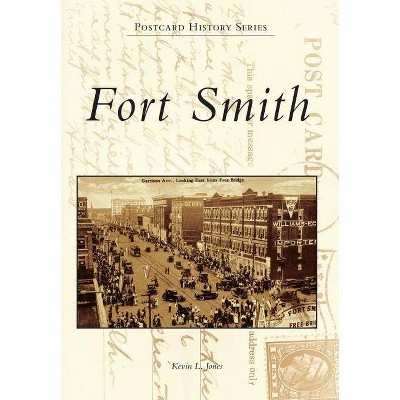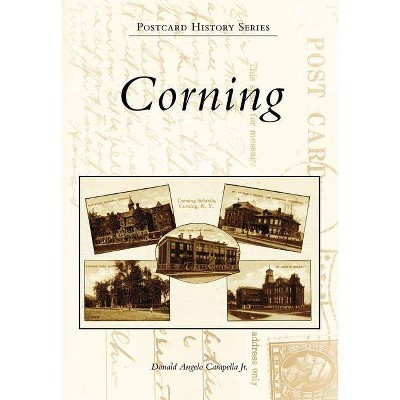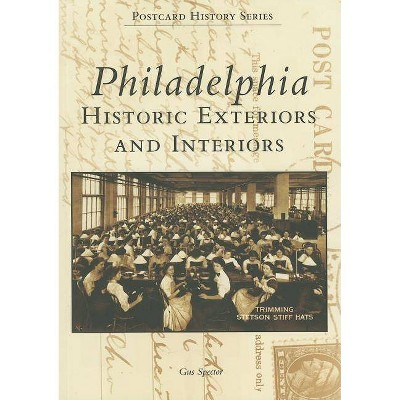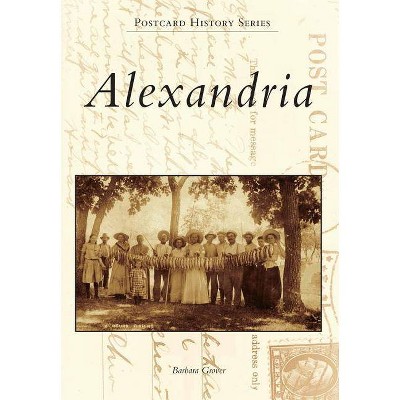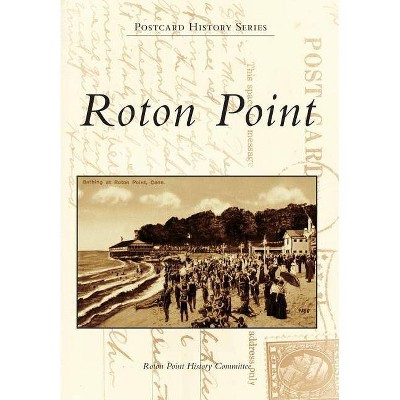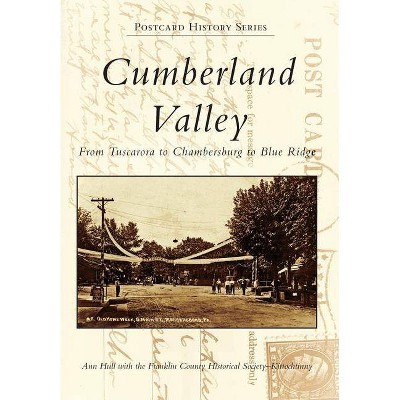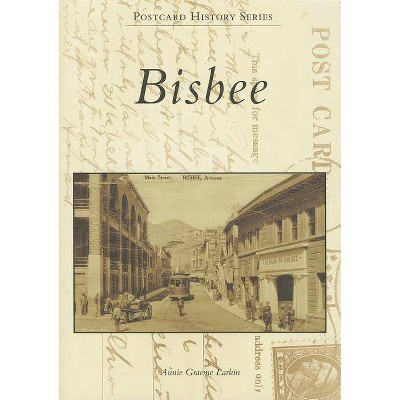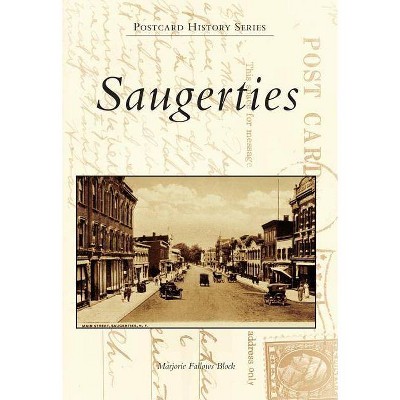Gardiner - (Postcard History) by Danny D Smith & Earle G Shettleworth Jr (Paperback)
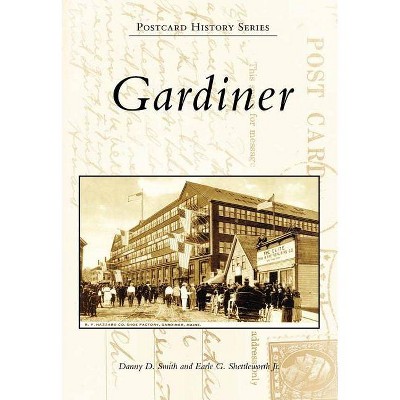
Similar Products
Products of same category from the store
AllProduct info
<p/><br></br><p><b> Book Synopsis </b></p></br></br>Gardiner's manufacturing and transportation advantages during the first half of the 20th century created one of the strongest local economies in the state. The city seal, adopted in 1849 when Gardiner became a city, flawlessly depicts the characteristics that shaped the community. Featured prominently on the seal is a river with falls to power manufacturing. A vessel represents transportation and trade, while an idealized city in the background reveals prosperous factories and commercial buildings. At the top is a lofty church tower, representative of the many churches in the city. Gardiner features many never-before-published postcards from the collections of the Maine Historic Preservation Commission.<p/><br></br><p><b> Review Quotes </b></p></br></br><br>Title: GARDINER Book puts historic stamp on city postcards <p/>Author: Mechele Cooper <p/>Publication: Kennebec Journal <p/>Date: 11/29/2008 <p/><br>Vintage postcard photography that captured the essence of Gardiner is featured in a new book by a state and city historian. <p/>Earle Shettleworth Jr., longtime Gardiner resident and executive director of the Maine Historic Preservation Commission, collaborated on the book with Danny Smith, Gardiner's historian and chairman of the Special Collections Committee of the Gardiner Library Association. <p/><br>The resulting Arcadia Publishing Postcard of America series, "Gardiner," is filled with never-before-published postcards. <p/><br>Anne Davis, director of library and information services at the Gardiner Public Library, said the old postcards illustrate Gardiner's history as it became one of the state's strongest manufacturing and transportation centers because of its location on the Kennebec River and Cobbosseecontee Stream. <p/><br>"We published a book on Gardiner back in 1996, a pictorial history of Gardiner," Shettleworth said Tuesday. "And now we've done an entirely new book that contains 217 postcard views of Gardiner from 1900s to about 1960 along with interpretive captions." Shettleworth and Smith will present a slideshow of their new book at the Gardiner library 10:30-12:30 p.m. Dec. 13. After the presentation, books will be for sale and the authors available to sign copies. <p/><br>Smith said it wasn't until 1898 that American publishers were allowed to print and sell postcards. <p/><br>According to the Smithsonian Web page, only the United States Postal Service was allowed to print postcards. <p/><br>Then in 1898, Congress passed the Private Mailing Card Act. That act allowed private publishers and printers to produce the cards. Photographs weren't allowed on the postcards until a few years later. <p/><br>Smith said postcards became popular after the law was changed, but people lost interest after World War ll. <p/><br>Their new book is organized into eight chapters, he said. Postcards include the downtown area, views of commercial buildings and images of different sections of Water Street from 1900 to 1958. <p/><br>There's a chapter on public buildings and spaces, such as the library and City Hall, school buildings and churches and private homes. <p/><br>"There's quite a few private residences shown in this book," Smith said. "We have several scenes of the Oaklands, the Gothic revival stone mansion the Gardiner family built in 1836 by Richard Upjohn, and many other images of very elaborate family homes throughout Gardiner. <p/><br>"Many of them are gone, unfortunately." <p/><br>He said there is a huge chapter on industries -- paper mills, shoe factories and the defunct ice industry. Transportation postcards show the train stations, gas stations and the old drawbridge built in 1896 that once connected Gardiner and Randolph. <p/><br>"But the unique thing about this book is the 53 images of postcards nobody else has ever seen before," Smith said. "The Eastern Postcard Company is defunct, but the Penobscot Maritime Museum owns the archives of that company. The people up there were so good. They picked out everything in Gardiner and the surrounding area, then Earle and I chose the images." <p/><br>Shettleworth, who has published a number of books including "Victorian Augusta" earlier this year, said his latest book was an opportunity to collect and share historical photographs with the public. <p/><br>"I think it is a very wonderful way to communicate local history to the public not only with photographs, but also the captions," Shettleworth said. <p/><br>Shettleworth said vintage photographs make people aware of what they lost, but also what they still have. <p/><br>Places may disappear over time, he said, but there are many attributes in the community still in existence. <p/><br>"You could literally take the book in hand, on a nice day, and walk up and down Water Street and compare the old views with the present buildings and see how they've changed," he said. "It's a very interesting process."<br>
Price History
Price Archive shows prices from various stores, lets you see history and find the cheapest. There is no actual sale on the website. For all support, inquiry and suggestion messagescommunication@pricearchive.us
